When looking at how your investments are doing, we believe one of the most important factors to look at is not how much you make – the gross return. We believe one of the most important numbers to look at is how much you keep after all fees, expenses and taxes — the net return.
One portfolio can make 10 percent and another 5 percent, but if you pay taxes and expenses on the 10 percent portfolio and end up with just 4 percent, you would be better off with the 5 percent portfolio. Often people just look at the gross number and miss what is really important. Moreover, focusing on the wrong thing — such as just lower expenses — can lead to a lower net return. This is a hypothetical example for illustration purposes only and does not represent an actual investment
Taxes Matter – But Sometimes the Lower Return Gives You More – The tax bracket you are in helps dictate the types of investments you should own to optimize your net return. For example, someone in a 50 percent tax bracket may be better off with a 5 percent tax-exempt investment than a 6 percent taxable one. This is a hypothetical example for illustration purposes only and does not represent an actual investment , here’s the math:
6% – tax of 50% = 3% net – It’s important to consider the tax implications of your investments when allocating your portfolio and monitoring your returns. This is just one reason why it’s important to work with a financial advisor who understands the tax implications of every financial decision you make.
Expenses Matter – But Not Always the Lowest Ones – Expenses do matter, but again, one of the most important numbers is your return after fees and expenses. For example, it’s better to have an investment with a 2 percent expense that gives you an 8 percent return than an investment with no expenses that gives you a 1 percent return. Fees and expense are a consideration, but we believe it’s what you keep that may be most important.
Fees Matter – But Not Always the Lowest Ones – Working with a professional advisor can add to your net return, even though you will have to pay him or her a fee. A recent Vanguard study says advisors can add “around 3 percent” to clients’ net returns.
“Rather than placing its major focus on investment capabilities, the advisor’s alpha model relies on the experience and stewardship that the advisor can provide in the relationship. Left alone, investors often make choices that impair their returns and jeopardize their ability to fund their long-term objectives.”
NUMBERS ARE NOT ALWAYS WHAT THEY SEEM! If we invest $100,000 into a portfolio that has a track record of 30% for 1 year, 40% average annual return for 2 years and 10% average return for 3 years – we don’t really know how much it made or even if it made anything. For example if we invested $100,000 and in the first year it lost 50% it would now be worth $50,000; in the second yer it makes 50% it’s now worth $75,000 and in the third year it makes 30% it is now worth $97,500. We have less than we started with and yet this portfolio has a 1 year return of 30% , a 2 year average return of 40% and a 3 year average of 10%! This is a hypothetical example for illustration purposes only and does not represent an actual investment
WHAT IS THE GOAL? Benchmark According to Your Own Goals –If a portfolio is meant to generate reliable income that you count on and does so successfully the overall average return may be less than a stock portfolio that doesn’t generate income. However, the portfolio that with the higher return not meeting your needs. We need to understand what the goal of a portfolio is. Meeting your goals is more important than meeting a specific number or beating an index.
Benchmarks can be helpful for comparing your portfolio’s performance to an industry figure. But comparing a portfolio to the wrong benchmark can lead to a mis-perception of how well you are doing. Often, investors compare their portfolios to the S&P 500 stock benchmark, even though they own investments other than large-cap stocks. That is not a relevant comparison. Plus, if you are invested to generate reliable current income, that is a different objective than beating the S&P. We believe one of the most important benchmarks is whether or not you can meet your current income needs and future goals.
The “Standard & Poor’s 500” index is a grouping of 500 of the largest U.S. stocks, weighted by market capitalization, which simply means the stock price multiplied by the number of shares outstanding. Market analysts commonly use this figure to designate a company’s size. This year, Amazon, Netflix and Microsoft together this year are responsible for 71 percent of S&P 500 returns and for 78 percent of Nasdaq 100 returns. Apple also makes up a large portion of the index return — 12 percent of both S&P 500 and Nasdaq 100 returns. Movements in these four companies will move the index but might not be representative of the broader market — and may not be representative of a well-diversified portfolio.
We Can Demystify the Process – Our process takes a very proactive approach based on your personal income needs, tax situation and overall goals. Rather than using models we custom allocate each portfolio based on your personal needs, objectives, tax situation and risk tolerance. Equally important is that we can help you understand what your portfolio is doing and why. We can help you define your needs and then design a plan that will help achieve eve your individual goals. At the end of the day, it’s not about what you make, but what you keep, that we believe is important. Our advisors will partner with you to take the guesswork out of the best investing approach for your distinct situation.
Please contact us to discuss your Personal Vision Planning®, to get a second opinion on your current plan or if we can otherwise be of service. Randy.carver@raymondjames.com or (440) 974-0808 .

 Forbes recognizes Randy Carver as one of the Top 250 Wealth Advisors In The United States
Forbes recognizes Randy Carver as one of the Top 250 Wealth Advisors In The United States











